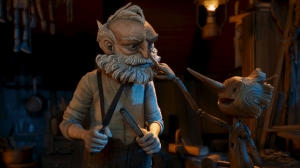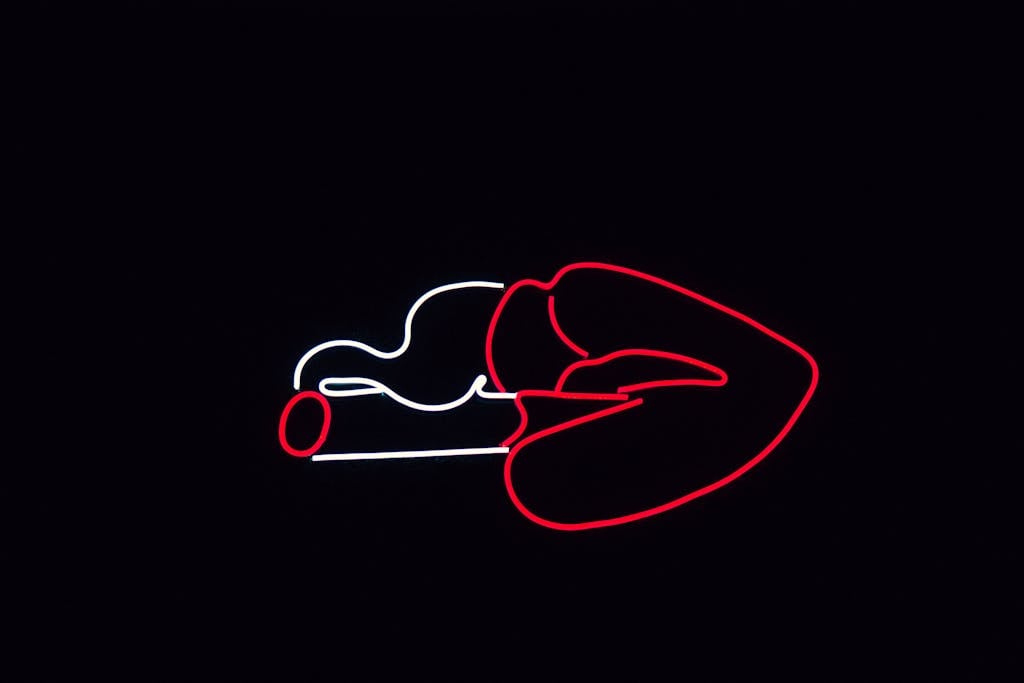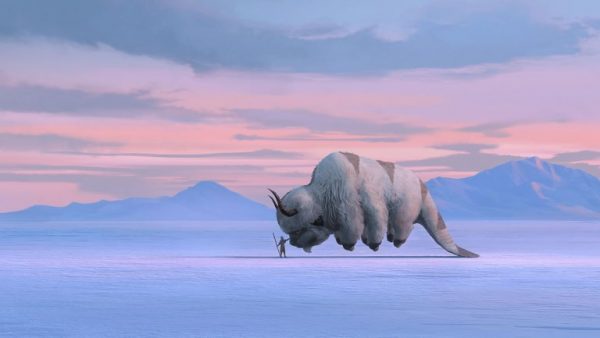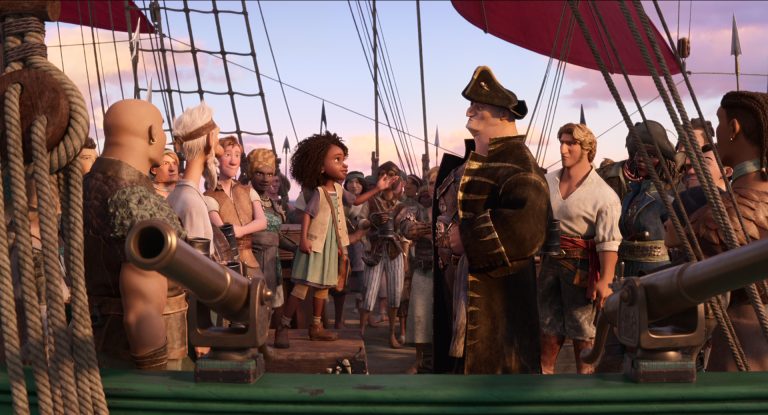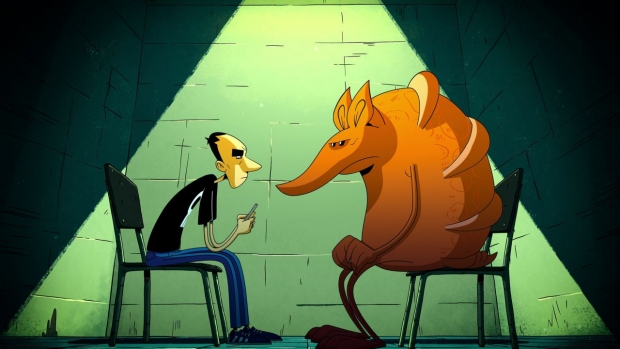Sebastian J. Cricket (Ewan McGregor), the diminutive narrator of Netflix’s new stop-motion adaptation of Pinocchio, establishes his intentions from the very beginning. “This is a story you may think you know,” he says, “but you don’t.” Sebastian’s intentions clearly match those of the film’s creator and co-director, Guillermo del Toro. While del Toro’s film draws much from the original children’s book ‘The Adventures of Pinocchio’ by Carlo Collodi, it puts the Oscar-winning filmmaker’s unique stamp on the classic tale of a wooden puppet who strives to become a real boy.
The film’s unashamed devotion to art takes root early on, in the scene where Geppetto first creates Pinocchio. In the book, Pinocchio is carved from a piece of ordinary wood that is intrinsically alive. In the film, he is born directly out of Geppetto’s grief over the loss of his son, Carlo (Alfie Tempest). The creation scene, in which Geppetto hacks and wrenches Pinocchio into existence, is a dark and violent affair. Geppetto himself is drunk – a tortured artist whose métier is a kind of damnation. It is not hard, therefore, to see Pinocchio as a baroque metaphor for art itself.
The director’s love of the grotesque continues into the following scene, when Geppetto wakes – presumably with a terrible hangover – to find a monster lurking in his attic. Of course it is no monster but a wooden puppet brought to life by the Wood Sprite (sister of Death, also voiced by Tilda Swinton). Seen for the first time through Geppetto’s eyes, Pinocchio is a lurching spidery thing starkly illuminated by thin shafts of light, a real horror-movie spectacle.
The father-son theme is echoed in the recurring images of Jesus Christ. It is while carving a wooden Christ on the cross that Geppetto loses Carlo, when a stray bomb lands on the church. The Biblical connection is reinforced by the fact that “Geppetto” is a Tuscan diminutive for “Giuseppe,” which is itself the Italian form of “Joseph,” father of Jesus and arguably the most famous woodworker in history. The imagery takes on new meaning when, years later, Pinocchio watches his father restoring the damaged Christ sculpture to its former glory and observes that while he and Jesus are both made of wood, the towns people love the son of God and despise the little wooden boy.
Pinocchio and Geppetto reach this epiphany simultaneously, father and son united at last in the simple knowledge that each of them is who he is, and that each accepts the other wholeheartedly and unconditionally. Acceptance of diversity is important, perhaps more now than ever before, and this is precisely what makes Guillermo del Toro’s Pinocchio a timely masterpiece and an unforgettable fable for the modern age.
This theme of acceptance crystallizes into something powerful and deeply moving in the film’s transcendent finale. Veering radically from Collodi’s text, del Toro refuses to transform the wooden puppet into a boy made of flesh and blood. The message is clear – Pinocchio is different because he is made of wood, and that is nothing to be ashamed of. Quite the contrary – it is a cause for celebration.
Thanks to the powerful bond between father and son, Geppetto experiences his own rite of passage. During the film’s opening flashback sequence, Carlo gives his father a gift of a pine cone. But Geppetto rejects it because some of its scales are missing – it has to be perfect. Shortly after the moment when Carlo finally presents him with an unblemished cone, the boy is killed. Geppetto’s journey teaches him the folly of pursuing perfection – he learns that it’s okay to be flawed. By the end of the film he accepts Pinocchio wholly for who he is, even though others may judge him imperfect by a certain set of standards.
Dr. Maria Elena Gutierrez is the CEO and Executive Director of VIEW Conference, Italy’s premier annual digital media conference. She holds a Ph.D. from Stanford University and a B.A. from the University of California Santa Cruz. VIEW Conference is committed to bringing a diversity of voices to the forefront in animation, visual effects, and video games. For more information about VIEW Conference 2022 program of events, visit or the website: https://www.viewconference.it/
As always, del Toro takes his love of grotesquery and transforms it into something beautiful. The film is a visual tour de force filled with gorgeous imagery and boasting an impressive level of detail both in the design, and in its realization through the hand-crafted medium of stop-motion animation. The use of light is especially memorable. Every frame is a masterpiece of chiaroscuro, echoing the work of great masters such as Rembrandt and Caravaggio and working particularly hard whenever it falls across Pinocchio’s face. The design of the central character, drawn directly from illustrations by Gris Grimly, emphasizes the sculptural and textural qualities of the wood from which he is carved, so that as the light shifts Pinocchio’s identity is totally transformed.
However, the lessons that Pinocchio learns in the film are somewhat different to those he learns in the book. For example, Collodi’s text clearly displays a post-Enlightenment attitude towards education – only by going to school will Pinocchio acquire the higher knowledge he needs to achieve his true self. Without this education he is doomed to remain a savage living entirely within his own emotions.
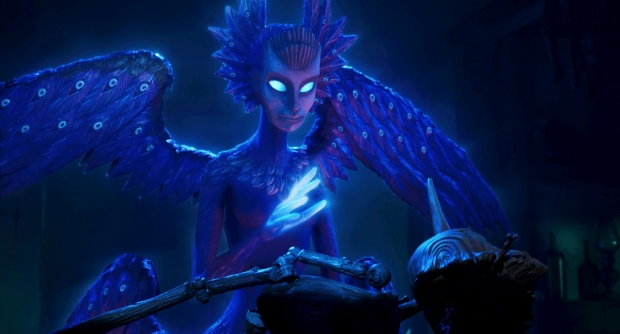
—
As Pinocchio ventures out into the world, he inevitably comes up against the establishment. Del Toro’s decision to set his version of the story in Fascist Italy gives the filmmaker ample opportunity to present the powers-that-be as cold and controlling. It is the local Podesta (Ron Perlman) who demands that Pinocchio must go to school, while the church and its congregation are portrayed as aggressively intolerant of the wooden boy’s differences. The book’s sinister playground of Toyland is transformed into a Fascist boot camp for youths that brings to mind the Gioventù Italiana del Littorio. The message is clear throughout – Pinocchio is expected to conform, but if he does so he will remain a puppet of the system for his entire life. Only by rebelling will he discover his true identity.
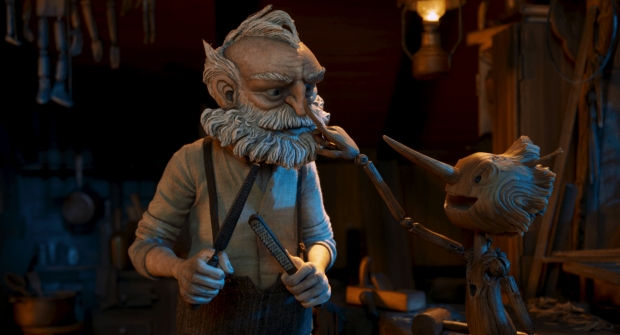
As father-figures, the male guides play a more significant role in Pinocchio’s rite of passage. Indeed, one of the central themes of the film is the relationship between father and son. Pinocchio progresses from feeling a simple desire to please Geppetto to expressing true love for his father. Meanwhile the young boy Candlewick (Finn Wolfhard) experiences his own rite of passage when he shoots his father, the cruel Podesta, in order to save Pinocchio. The monkey Spazzatura (Cate Blanchett) makes a similar sacrifice by attacking the evil circus-owner Count Volpe (Christoph Waltz), his own paternal nemesis. For Candlewick and Spazzatura, achieving autonomy means rejecting the authoritarian father. For Pinocchio, the critical transformation comes when he puts his father’s needs before his own.
Del Toro subverts this Platonic ideal by shifting attention away from pure knowledge and towards art. Ultimately, his version of Pinocchio triumphs not by conforming to an ideal of obedience but by breaking authoritarian rules. In fact, he is actively urged to disobey by those who have guided him up to this point. In order to escape from the belly of the giant Dogfish, Geppetto (David Bradley) urges his wooden son to lie so that his nose will grow into a tree-like ladder, directly contradicting the advice he has previously dispensed. Later, when Pinocchio chooses to sacrifice his immortality in order to save Geppetto, the Sphinx-like figure of Death (Tilda Swinton) reveals that the only way he can achieve this is to “break the rules.”
Humor plays an important part in this debunking of authoritarianism. While the original book is not notably comedic, del Toro takes delight in peppering his adaptation with wit and warmth. This injection of humor enables the filmmaker to tell a deeper story that adults will appreciate, and serves his agenda by lampooning symbols of power. In his brief cameo appearance, Benito Mussolini (Tom Kenny) is represented as a round dwarf and referred to not as ‘Il Duce’ but as ‘Il Dolce,’ which might amusingly be translated as ‘The Sweet,’ ‘The Sweetie,’ ‘The Softie.’ For all his stature as both narrator and Pinocchio’s guide, Sebastian J. Cricket serves as the film’s comic relief – just count the number of times he gets bashed, flattened and squashed in the service of entertaining!
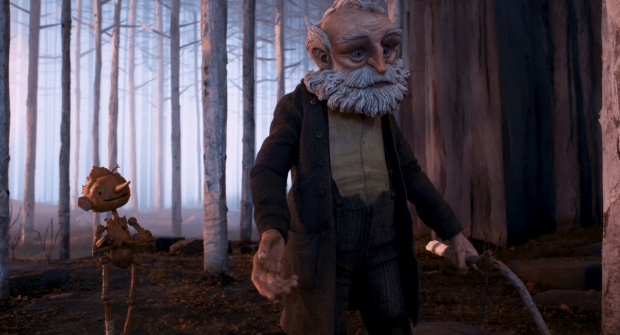
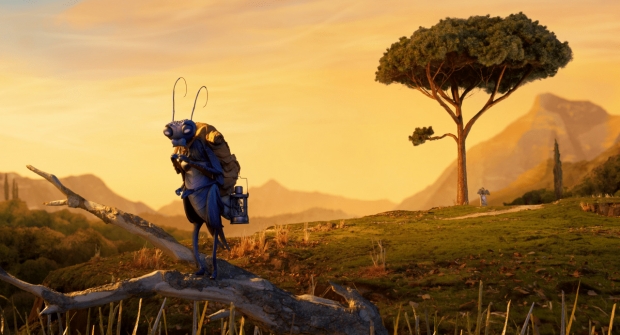
As in Collodi’s book, Pinocchio is helped on his journey by a number of guides, including Geppetto, Sebastian J. Cricket, and the sister-spirits of the wood and the underworld. Here there is a distinct male-female divide. Like the Fairy in the original book, Death and the Wood Sprite are “angelic” helpers guiding Pinocchio just as Beatrice guides Dante into paradise in the “Divine Comedy.” As is often the case in such poems, stories and fables, these women are there to nurture and to advance the plot; they exist to assist the protagonist. In del Toro’s hands, however, they take on the extra visual dimension of exquisite monsters, beautifully imagined and powerfully pagan with their deep primal energy.
Like the book, del Toro’s film adheres closely to the traditions of the Bildungsroman, as it follows Pinocchio’s rite of passage through hardship towards enlightenment and a true coming-of-age. At its heart, this is Pinocchio’s spiritual journey during which he gains vital knowledge and experience, and ultimately learns who he really is. In this respect it is a true cosmogonic myth.

Dr. Maria Elena Gutierrez is the CEO and executive director of VIEW Conference, Italy’s premiere annual digital media conference: http://viewconference.it.
